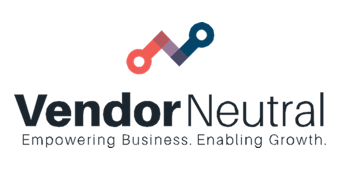Sales Technology Buyers Guide Part 4 -Sales Technology Strategy
Go Live & Beyond with a Sales Technology Strategy
You’ve have made it this far into the Sales technology buying process, and this is the last step: full-scale launch. This is the moment or moments you and your team have been waiting for! Once the final decision has been made, you and team are aligned with the vendor and the pilot was a success, it is time to move forward with rolling the solution out to your sales teams and the overall organization.
Similarly, to the previous 3 phases of this project, care must be taken that this portion is executed appropriately; after all this will be the first exposure most of your sellers have to the new platform. The last phase can be broken into two parts, Launch and Post-Launch.
Launch!
Communications
 The first thing to consider during the launch is communication to the sales force. You’ve spent so much of your time choosing this platform and calibrating it, the last thing you want is to launch it, disrupt your seller’s activities and jeopardize adoption.
The first thing to consider during the launch is communication to the sales force. You’ve spent so much of your time choosing this platform and calibrating it, the last thing you want is to launch it, disrupt your seller’s activities and jeopardize adoption.
When considering how to inform your sales force of the coming change, it best to put yourself in their shoes and consider the impact on them. Commonly referred to as “WIIFM” or “what’s in it for me?”, It’s the value your decision brings to the seller.
An easy way to communicate this is to return to the work you’ve done in a previous stage and reiterate the challenges or problems you are trying to solve and the potential benefits of the implementation. Revisit the list of objectives and the perceived benefits and combine this with what you saw or learned during the beta to reinforce and garner trust in your decision. Once the initial communication is delivered its time to plan the training.
If you are fortunate enough to have training resources as part of your team now would be the time to involve them. If not, you will need to decide on the associate responsible for the training, from development and execution to ongoing support. You should be working closely with your vendor to provide the best training experience. Depending on the platform or solution you are buying, it may warrant bringing in the vendor to do training or “train the trainer.”
Either approach works, the key is to ensure that the vendor understands your business and its intricacies including process and terminology. If an internal resource delivers the training, ensure they are comfortable with the platform. This may take a few training sessions for them, but ultimately it is worth it. It can be detrimental to launch a platform and not be able to answer a basic question on function or use or how it aligns to their current role.
After the training resource is identified, it is time to take care of the logistics of the training. Be sure to have as many sessions as needed. Depending on who will use the solution, having a few sessions with medium-sized groups (10-12) is ideal. If you are launching a platform for a large organization, bigger cohorts may be needed. Typically, you want to keep the groups small enough to be intimate and interactive, but larger enough to get everyone through quickly. Be sure to schedule an online session for remote employees, and makeup sessions as needed.
Once sessions are secure, you should begin reinforcing the training and trainers’ level of knowledge along with the approach to the platform. Depending on who will be doing the training, begin to coordinate training walkthroughs, or sessions to highlight the flow of the new platform or software, how it is used and how it fits into the existing process.
Be conscious to continually reevaluate this approach, as it is easy to get caught up demonstrating the features and benefits of the platform without showing how it will be integrated into the seller’s daily process. Continually reinforcing this point during the training will help drive adoption and buy-in.
Training Approach
Another aspect to consider is the training format. Since we are probably talking software with an interface, a live walkthrough is best. Don’t just go through it once and call it a day, rather go screen by screen, button by button and highlight the process, functionality, and reasoning for what you are doing. This may seem tedious, but the step-by-step approach will make using the platform a whole lot easier.
Your sellers will be more likely to adopt the platform and typically ramp up quickly when they fully understand what the new tech does and how their interactions make it work. One of the last things you want is to have them arbitrarily clicking buttons and hoping it works. Adding an interactive component as well can be beneficial. Many organizations provide everyone with laptops so adding a live click-through practice session will further reinforce the training.
In support of the live training, manuals or user guides should be developed as well. Your vendor will have generic ones, but depending on the installation, a bespoke version may be warranted. Ideally, these should include screenshots, click-by-click directions and explanations for any number of actions you can take within the platform. These guides should be a clear take-away that the sellers can reference any time, so regardless of who develops them, ensure they are clear, easy to use, and to the best of your ability, align to the activities or process a typical seller would encounter.
 Additionally, if applicable or capable, the training should be recorded either in person or via a web application. These recordings will provide another valuable, lasting training tool sellers can reference later. The video recording can also be tailored to your individual instance and possible integration with other systems, making them even more relevant. As you onboard new sellers, these come in handy, as they provide great time savings for training, especially for smaller or simpler applications.
Additionally, if applicable or capable, the training should be recorded either in person or via a web application. These recordings will provide another valuable, lasting training tool sellers can reference later. The video recording can also be tailored to your individual instance and possible integration with other systems, making them even more relevant. As you onboard new sellers, these come in handy, as they provide great time savings for training, especially for smaller or simpler applications.
The last aspect to consider for the training approach is how involved you should have the beta testers be. Nothing sells better than referrals, so be sure to have them co-train or at the very least attest to the benefits. Further driving buy-in and adoption, having your sellers who participated in the pilot available during the training can also help answer questions from their experience. Their insight can be particularly handy when a very specific sales question arises.
Once you have laid out the approach, aligned resources, created content and set up the session you should be ready to execute the training. Be sure to have those resources (trainer and vendor if available after the training, to shadow users, walk the sales floor for questions, or hold open “office hours” This should conclude the major activities for the launch and training. After this, close monitoring and support will be the foundation of the final phase, Post launch.
Post Launch
The last phase of a successful sales technology launch is focused on the future. Specifically, who will “own” the platform, who will be the go-to or in-house resource for questions, and who will be responsible for training new hires. Although it is easy to let your foot off the gas so to speak, because it may feel like the process is coming to a close, it is important that your sales technology strategy ensures the proper resources are aligned to continue to enjoy success and ongoing adoption of your new sales tech tools.
When choosing someone to take the reins, it is important to ensure their role aligns to the use of the platform. Arbitrarily giving someone responsibility who may not fully understand the use or need of a tool can put them and you in a situation that may not be the best fit. If you have operations, enablement, sales support or a CRM team, chances are the new installation will live with one of them. It is important to make sure the new owner understands the platform, is familiar with the function, features, and uses and is in contact with the vendor and supporting team.
Ideally, it should be someone who has been intimate with the project since kicking off or even before. The closer they are to it the better. This person should also understand it is their new responsibility to stay up to date on the use, adoption, challenges, and improvements that come out of the ongoing support of the platform and should be comfortable communicating them both with the vendor and internally. At the end of the day, you want someone who is comfortable with the platform, but also the ownership and expectations that come along with it.
30/60/90-day Calibrations
This person should also put together check in’s or calibrations at the 30/60/90-day point. These sessions should include a mix of users, not confined to one role if applicable, and be open forums to discuss what is or is not working. The leader can certainly focus on a specific feature or use, but the general theme is to collect feedback that can help troubleshoot challenges, make improvements, drive adoption and ensure overall end users are happy.
At each touchpoint, the leader should be collecting metrics and comparing them to benchmarks to provide feedback to the vendor and internal team of the progress that is being made. If it is the opposite, then the leader can provide the metrics to the vendor to work on a solution. Either way, the owner will have performance data to help keep stakeholders and vendors up to date on the progress.
After 90+ days, assuming everything is working to satisfaction, the leader can choose to discontinue the meetings. If this happens,  they should continue to monitor metrics and usage to ensure expectations are continually met. The leader should continue to stay in contact with the vendor, depending on needs, monthly touchpoints should suffice; to stay up to date on changes or improvements to the platform.
they should continue to monitor metrics and usage to ensure expectations are continually met. The leader should continue to stay in contact with the vendor, depending on needs, monthly touchpoints should suffice; to stay up to date on changes or improvements to the platform.
As most technology platforms continuously evolve, chances are the vendor will have a roadmap that may share with you (if they haven’t already). This will be a great way to keep up with the platform and implement improvements the vendor makes if necessary.
Depending on the platform chosen, they may even host an annual user conference or seminar for the leader to further deepen their knowledge and exposure, and possibly interact with others who use the platform to share best practices.
At this point, you will have a very good idea if your investment has or will pay off. A sales technology strategy in the whole process, including the last phase, is critical to ensuring a successful investment and launch. As challenging as it may seem, being prepared can save your organization months, even years selecting, calibrating and ultimately launching a platform, and even then, it could still fail.
As with all phases of the salestech buying process, a well prepare sales technology strategy, properly preparing your teams and organization, and aligning with your vendor are the keys to success. Assuming you did your homework and followed the phases you should be set up to succeed. Congratulations on a successful sales technology investment and launch! Time to get started on the next one…


